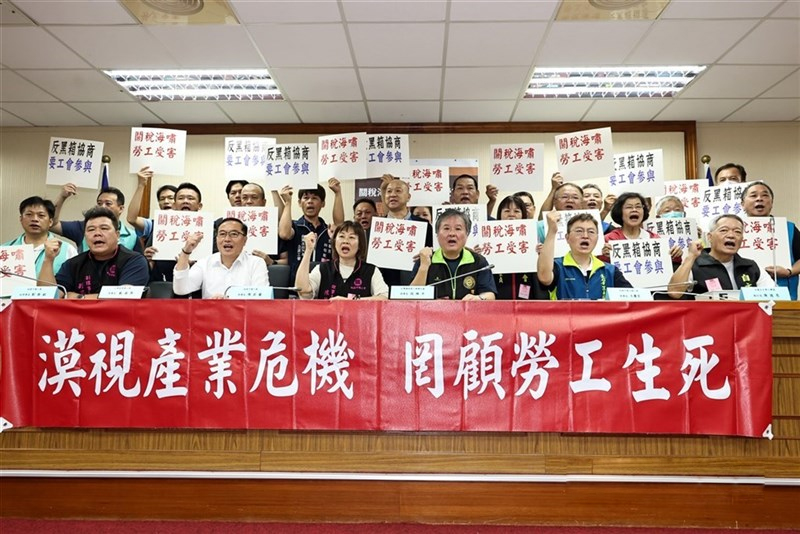The newly formed Taiwan Labor Action Coalition in Response to Tariff Impact—an alliance of about 70 labor unions—issued a stern warning on July 4. The coalition has pledged to organize a mass protest that would encircle the Executive Yuan unless Taiwan prioritizes workers’ rights during delicate trade and tariff negotiations with the United States.
Key developments:
- The coalition objects to what it describes as “closed‑door negotiations” that exclude labor representatives, raising fears that worker protections might be sacrificed for tariff relief.
- U.S. President Trump’s April announcement of a 32% reciprocal tariff on Taiwanese exports (later reduced to 10%) triggered the pause and negotiations; coalition members fear the pause could mask a cost to labor.
- Taiwan’s Executive Yuan released a vague statement on “constructive progress” in talks—programs which coalition members argue are insufficiently transparent or inclusive.
- The coalition rejects proposed subsidies from the NT$88 billion support fund, labeling them “deceptive” unless they come with legally binding worker protections.
- Government estimates suggest ~125,000 workers may be affected, while labor groups estimate up to 300,000 could be impacted across regions like Tainan and Taoyuan.
🔍 In-Depth Analysis & Context
1. Why is labor so concerned?
Tariffs can significantly impact Taiwan’s export-dependent economy. Labor fears that negotiations may force industries to cut costs by reducing hours, layoffs, or restructuring— without meaningful worker representation or safeguards. The proposed subsidy fund may not address root issues if job stability remains unprotected.
2. Echoes of past labor movements
This situation echoes earlier protests like the 2014 Sunflower Movement, where activists demanded transparency and public participation in economic agreements. Labor is invoking a familiar playbook to demand open discussions and protections.
3. Political ramifications
With general elections looming in early 2026, a large-scale protest could pressure President Lai Ching-te’s DPP administration, which has strongly backed the negotiation process. The KMT and other opposition parties may join labor to shape public sentiment and policy.
4. What happens next?
The 90-day tariff pause expires on July 9. Without labor inclusion, the coalition warns, mass protests will follow. Ideally, meaningful labor representation would be added before a final agreement is signed.
5. Potential outcomes
Successful insertion of labor protections—such as enforceable job guarantees, retraining programs, and sectoral advance notice—might calm tensions. Otherwise, an Executive Yuan standoff and possible legislative involvement may follow, raising the likelihood of civil unrest.
🧭 FAQs
What tariffs are at stake?
The U.S. proposed a 32% “reciprocal tariff” on Taiwanese goods in April, later paused at 10%, under a 90-day review period that expires on July 9.
Who represents labor’s interests?
The Taiwan Labor Action Coalition, formed June 17, unites 70 labor organizations and calls for real involvement in negotiation discussions.
What are labor’s primary demands?
No final agreement without labor representation
Legally enforceable job protections
Transparent dialogue among labor, government, and industry.
Could subsidies address these concerns?
Labor groups reject generic funding as insufficient: they want systemic protections rather than temporary financial aid.
How many workers will be affected?
Government estimates: ~125,000; labor estimates: up to 300,000 in key industrial zones.


